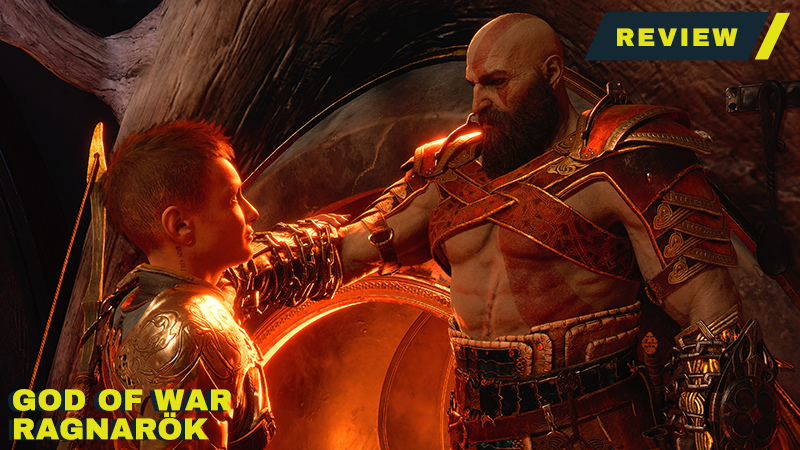God of War Ragnarök is in a similar situation as God of War II, as both were preceded by genre-shaking titans that cast long shadows. Following up greatness of that caliber is a tall task and Santa Monica Studio has had to do it twice with the same franchise. Whereas God of War II was an outstanding yet traditional sequel, Ragnarök is so much more, as it builds upon the 2018 entry, exceeds it in unexpected ways, and is a masterpiece that beautifully wraps up this godly saga.
While “Ragnarök” is an apt subtitle, the game is more of a “Part II.” Ragnarök is an extension of the 2018 entry and uses that foundation as a base that borrows the same locations, cast, and general gameplay loop. Even if Fimbulwinter has changed the visuals for each place, carrying all of this over sounds like an unambitious shortcut. However, it gives this series a more cohesive world that also means Santa Monica Studio has more leeway to dig even deeper; a luxury not afforded by teams that put sequels in entirely new settings. Ragnarök’s array of original characters, mechanics, and artistically stunning levels flesh out this established framework while also giving it enough of its own identity.
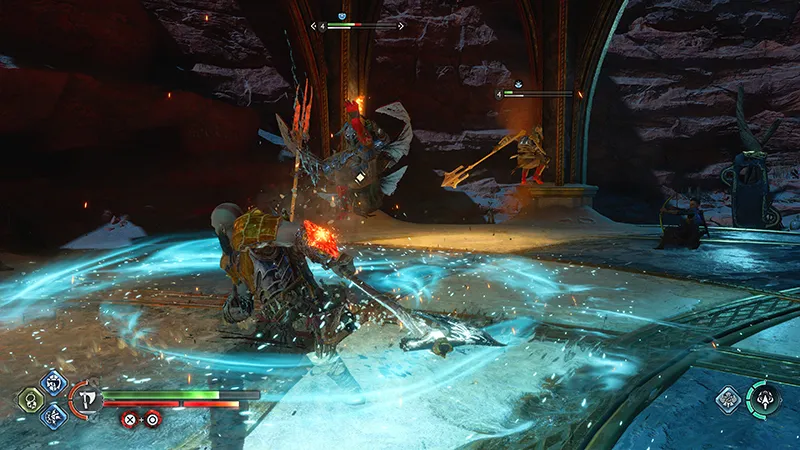
Combat is one clear example of Ragnarök’s astute mix of familiar and new. Battles still revolve around enemy prioritization and using Kratos’ Leviathan Axe, Blades of Chaos, and bare fists to maim everything in sight. Picking what to murder and how to murder it is endlessly satisfying because of the sheer amount of choices players have at their disposal.
Hacking away at a single target with the axe, performing crowd control with the blades, going for air juggles, and cleverly using the environment are just some of the available tools that make every battle different than the last. All of this is only enhanced by gear and upgrade systems that can add even more specialization and elements to play with. God of War’s combat also has many layers that make it continually rewarding. Fluid controls, well-telegraphed enemy animations, and beefy sound effects mean that it’s enjoyable to just hack and slash draugr to pieces on a base level and gets only even more gratifying once players learn elaborate combos and certain animation canceling tricks.
Ragnarök expands upon all of that by adding more variety in almost every way imaginable. Enemy diversity has increased exponentially, leading to fresh patterns to learn and possible matchups to encounter. Kratos’ lone new offensive weapon also gives players one more way to handle — and ultimately toy with — these new hordes. Not only is its existence justified through the story, but it also has a unique twist that can lead to more complex juggles for those who want to experiment with its many intricacies.
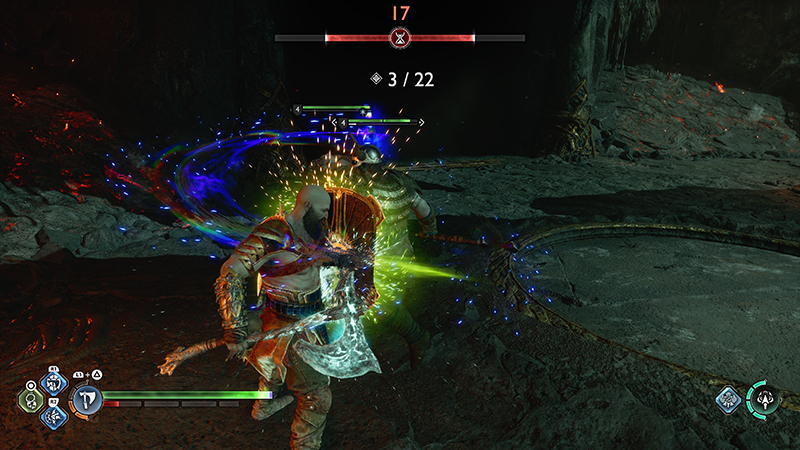
While a healthy chunk of Kratos’ moves for his existing weapons have returned, Santa Monica Studio has streamlined and upgraded them. Many of his Runic attacks have been folded into his base kit and this not only thankfully cuts down the overwhelming number of them from the last game, but also means players have more immediate choices and combo possibilities at any given time. Shields can now be customized, as well, and offer different ways to guard, parry, and break blocks. Even though bare-handed attacks have been noticeably scaled down, the shield has been more properly explored and allows for greater control over Kratos’ defensive capabilities.
New weapons and attacks are big tent poles to point to in order to underline Ragnarök’s excellent combat, but there are plenty of smaller tweaks that all play their own role in ensuring that fights are deeper and more thoughtful. Arenas are wider, more vertical, and have a healthy amount of interactive elements like throwable debris. Most enemies now have multiple execution animations. The Rage meter can be spent in three different ways to support even more playstyles. A.I. partners are more diverse and have longer skill trees. In addition to a few curveballs that are better left as surprises, Ragnarök‘s mechanics have been refined and upgraded in key ways that lead to a stronger and more varied experience; an impressive leap given how great the last game’s combat was.
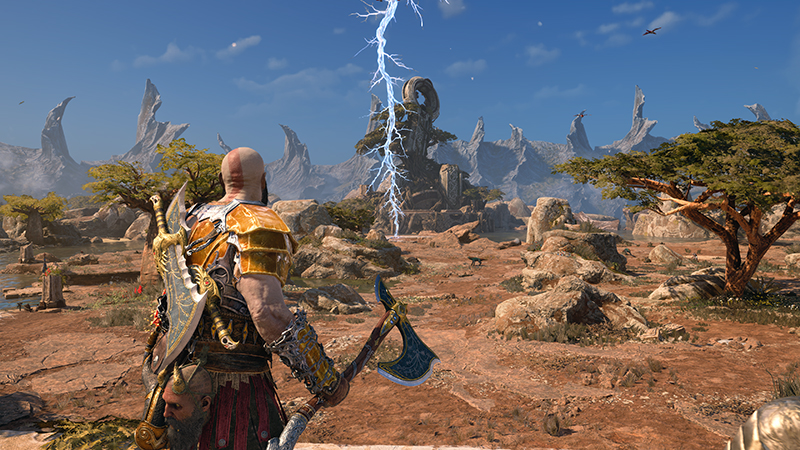
Because of its commitment to variety, Ragnarök is able to better sustain itself over a longer runtime. It’s a surprisingly lengthy experience and a lot of its girth comes from its side content. The Lake of Nine served as a hub in the 2018 game that let doled out optional objectives and places to explore between missions. Ragnarök has doubled down on that by having multiple open regions full of quests.
These voluntary hubs have useful gear to grab, but they are more remarkable because of how they flesh out the world. Each has a backstory that is doled out slowly and relates to the universe’s main players, all of which get told through the level design, multiple optional tasks, and Mimir’s delicately spun tales. It’s a deliberate approach that guarantees nothing is filler and is there solely to inflate the hour count. The side objectives in particular are fantastic because each of them reveals something about the protagonists, causes them to grow, or acts as a well-realized metaphor for them. It’s brilliant worldbuilding and important character growth done through means that games typically reserve for empty grinding.
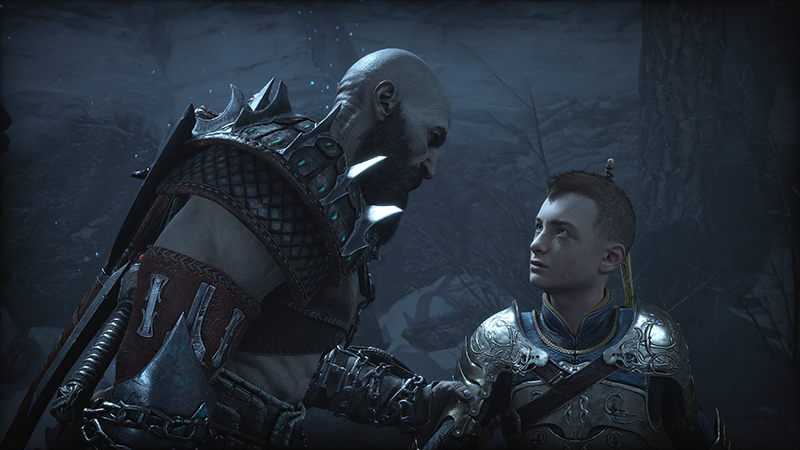
All of this also supports the main narrative that once again follows Kratos and Atreus. While their goals were aligned in the 2018 installment, Kratos and Atreus’ objectives are at odds in Ragnarök, which leads to one of its central sources of tension. Like a true teenager, Atreus acts recklessly to figure out his destiny and directly goes against Kratos’ desires to live a safe and secluded life.
It seems as though the game is building animosity between the two, but this dynamic serves a greater role in interrogating its two main themes concerning destiny and compassion. As shown by the Jötnar shrines from the last game, these realms are guided by prophecies written in stone and inhabited by beings that feel beholden to them. Odin’s totalitarian rule is mostly dictated by these oracles and Atreus is distraught by the unfortunate revelations they foresee.
Odin, in combination with his personable demeanor, is strangely humanized by these apocalyptic visions since the game spends time showing his fears and why he resorts to such extreme measures. On the other hand, Kratos advocates that one’s own decisions decide the future, which gets harder to defend when the Giants’ visions come to pass. Ragnarök deftly plays with this dynamic of expectations in such a manner that ironically makes it difficult to anticipate where the story is going to go. Asking if personal choices and doing good deeds matter in the face of inevitability are intriguing concepts the game thoroughly examines.
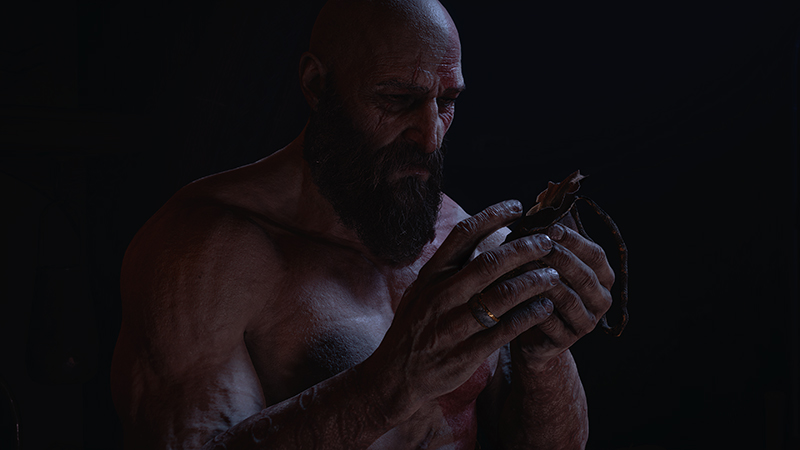
Choices also play into how Ragnarök investigates forgiveness and altruism. In a cutthroat world full of injustices, nearly everyone has an axe to grind. Kratos is no stranger to this, as his previous adventures were solely predicated on revenge. This gives him a fascinating perspective since he can speak to its follies with authority while also still grappling with that monster in his closet.
It’s not an easy balance to hold up since bloodlust is not so easily avoided with thoughtful words and reason. The difficulty of this ideal makes these intentions so much nobler because the world is challenging Kratos at every turn to relapse and make violence a first resort, especially when Atreus’ safety comes into play. Continuing Kratos’ arc in this unexpected direction gives him a much broader range of emotions and is an unheard reversal for a god-slaying man who was primarily known for his unbridled rampages.
While his about-face to become a more supportive father and understanding person is endlessly impressive, the game ties that ideal to other characters as well as its obsession with fate. Are those with ugly pasts beyond redemption and doomed to repeat those transgressions? Is striving for peace in the midst of an inevitable war unwise or does planning for that contingency only bring it to fruition? When do pacifism and benevolence transform into cowardice? Its cast grapples with these questions in different ways. Seeing such a violent game gracefully dig into these topics and mine them so intently is quite remarkable, especially since so much of it doubles as commentary on the series’ barbaric past.
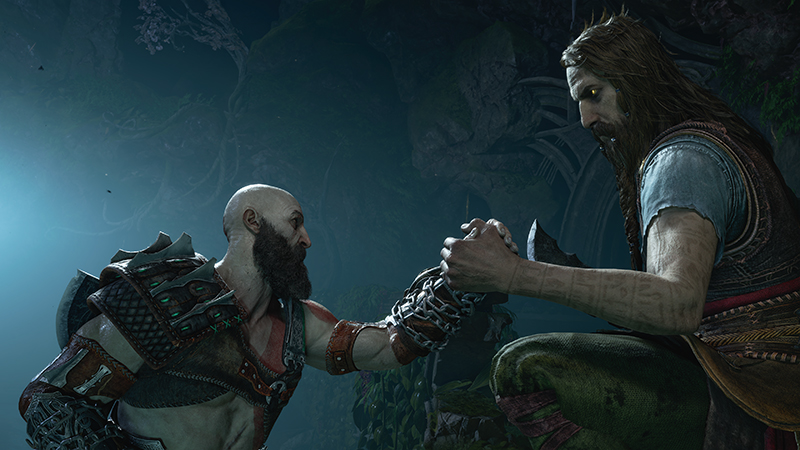
All of its ideas are wonderfully woven into its beautiful and unforgettable finale. Sensational performances, animation that captures small yet essential subtleties, superb writing that gracefully bounces between tones, a suite of shocking reveals, and an immersive no-cut camera are all narrative strengths it flexes throughout that help punctuate its ever-important conclusion.
God of War Ragnarök’s successes with its finale can be applied to the game as a whole since it is also an exquisite end to this Norse saga. Engaging lean-forward melee combat with a ton of variation, large worlds full of involving side quests, and an extraordinarily crafted narrative are each stellar in isolation but reach unparalleled heights because of how well they’re intertwined. Brutal yet empathetic, sprawling yet finely tuned, colossal yet intimate, God of War Ragnarök is a masterwork in multiple disparate ways that demonstrate the breadth of its quality and how triumphantly Santa Monica Studio wrapped up this climactic chapter.
SCORE: 10/10
As ComingSoon’s review policy explains, a score of 10 equates to “Masterpiece.” This is the rare release that transcends genre and must be experienced by all fans of the medium.
